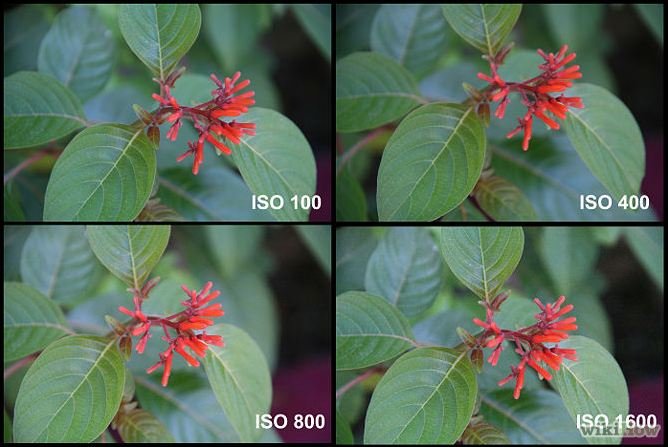The relationship between ISO & image Noise
Image Noise is something that affects all camera sensors as the ISO setting is increased. Most photographers try and avoid encountering Noise by keeping the ISO value as low as possible. It’s considered detrimental to a clean, crisp image, as the grain reduces colour vibrancy and softens detail.
At lower ISOs, Noise isn’t visible, but it gradually becomes more apparent as the ISO value is set to higher sensitivities. This is due to what’s known as the ‘Signal-to-Noise ratio’ (SNR), and is the same for all electronic devices that receive a ‘signal’. High ratios create minimal Noise, but as the ‘signal’ becomes weaker,more Noise is noticeable in the output or – in our case – the photograph.
While increasing the ISO produces more image Noise, the amount of Noise encountered varies depending on the sensor. Advances in sensor technology have created massive improvements for the relationship between ISO and Noise. Newer cameras suffer far less than their older counterparts at the same settings. Just 10 years ago, ISO1600 was almost unusable. But with today’s cameras you can barely notice any grain. It’s not just newer sensors which fare better – larger sensors offer improved performance too. This is why full-frame cameras are considered better than their APS-C cousins, and cost more to boot. The larger a sensor is, the bigger individual photo sites can be, so they have greater light-gathering potential. This means they can receive more ‘signal’, creating a higher SNR, so they produce less digital grain.

At very high ISO settings, Luminance and Colour Noise become noticeable in the frame. (Img Source : WikiHow)
Noise will also be more prevalent in darker areas of the frame than in lighter areas – again due to the SNR. This Noise can be split into two categories: Luminance and Colour Noise.
Luminance Noise appears as a type of monochromatic grain, and tends to be considered more ‘natural’ than Colour Noise, as it’s more reminiscent of film grain. It gives images that gritty and grainy look, and is often added intentionally in post processing.
Colour Noise – also referred to as Chroma Noise – shows up as unwanted blotches of colour across your image – usually red, blue, green or yellow. It’s thought of as much more distracting and displeasing than Luminance Noise, so is never really intentionally added for creative effects. This type of Noise is easy to remove with some simple processing.


























